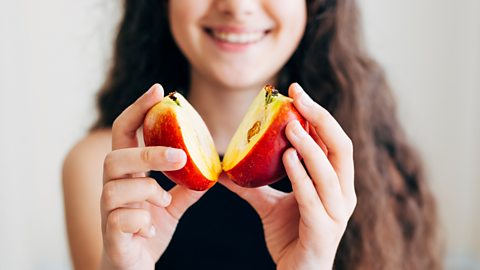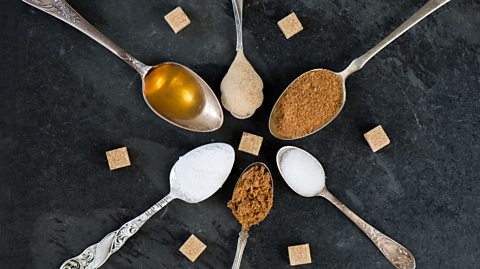Why you don't need to go on a "sugar detox"

Sugar, the simplest form of energy our body uses, is remarkably complicated. It is often seen as public health enemy number one, particularly in the new year, when some people resolve to go on a "sugar detox" after an indulgent festive period.
There's no doubt that we as a nation consume more than the recommended amount of sugar, according to the . Cutting back on sweets, chocolates and biscuits is surely no bad thing. And sugar can turn up in unlikely places making us more prone to eating more of it than we thought.
ThereÔÇÖs a growing movement among some experts that demonising sugar can be dangerous, leading to confusion, unrealistic expectations and cutting out important food groups in our diets. Sugar is naturally found in many foods that we don't eat enough of, like fruits and vegetables. While the term "natural sugar" is often co-opted to describe concentrated, added sugars that we eat too much of.
So what's important to know about sugar before you try to cut it out completely?
Are some sugars better than others?

Sugar is found naturally in many foods, including fruits, vegetables, grains and dairy products. Our bodies break carbohydrates down into sugars to be used by our cells for energy. Glucose, a form of sugar, is the primary source of energy for the body and the brain uses half of all the glucose energy our body requires.
The sugars naturally contained in milk, whole fruits and vegetables are intrinsic sugars, explains Registered Nutritionist Rhiannon Lambert, author of The Science of Nutrition, as the sugar is contained inside the structure of the food. While all sugars are eventually processed in the same way by your body, these foods also contain beneficial nutrients, fibre and fats, which are important for health and slow down the absorption of sugar, keeping blood sugar levels more stable. You donÔÇÖt need to worry so much about these foods, and it's important to eat at least five different fruits and vegetables each day.
Intrinsic sugars do not count toward the recommended maximum intake of 30g per day for adults (less for children).
The recommended limit of 30g refers to ÔÇ£free sugarsÔÇØ. Free sugars are removed from their natural state (in a sugar beet, in a maple tree, in an apple) and stripped of their structure, sometimes concentrated, then added to foods. Free sugars include everything from granulated sugar to coconut sugar, from golden syrup to agave nectar, from icing sugar to molasses. Even though the name of a sugar sounds "natural" or the sugar looks darker, or less refined, it is still a free sugar.
Free sugars also include honey and fruit juice, though the sugar is naturally occurring it is freely available for the body to absorb. The free sugar hits the bloodstream quickly, which can lead to high blood sugar levels that the body counters by secreting insulin. Insulin takes the sugar out of the bloodstream into cells where the energy can be used or stored as fat.
Related stories
Dietitian Rhiannon Lambert explains why we shouldn't worry about eating sugar found in fruit.
What food labels tell you about sugar
Telling the difference between natural sugar and added "natural-sounding" sugar can be tricky. You can find sugar on product ingredients lists, but there are many names for it, from scientific terms such as dextrose, sucrose, maltose, glucose, fructose, invert sugar to more "natural-sounding" molasses, malt extract, any syrup or nectar, and fruit concentrate.
The traffic light system found on some packages can help identify sugary foods. Traffic lights and nutrition labels don't state how much sugar has been added to food, or the amount of free sugars, but show the total amount in the food, including the intrinsic sugars. For this reason, some foods, such as natural yoghurt, which naturally contains the sugar lactose, may be labelled amber even though it does not contain added sugar.
Even without reading labels, you might be able to guess which foods may contain sugar. Over a quarter (27 percent) of the added sugar in UK diets comes from table sugar, jams, chocolate and sweets, according to the . While 21 percent comes from non-alcoholic drinks, such as fizzy drinks, fruit juice and squash. Biscuits, buns and cakes are high up the list, as well as alcoholic drinks, and flavoured dairy products such as ice cream and milkshakes.
It is less clear when foods that don't seem sweet contain added sugar: bread, breakfast cereals, snack foods, and fruity yoghurt can all appear to be healthy choices, but contain unexpectedly high amounts of added sugar. Savoury items such as shop-bought sauces, marinades, chutneys and ketchup can also contain a lot of added sugar.
Sugar swap recipes
Managing your sugar intake
Limiting the amount of added sugars you eat has clear health benefits, such as and for healthy weight management.
The NHS recommends adults have no more than 30g of free sugars a day, thatÔÇÖs around 7 cubes/teaspoons of sugar. This might sound like quite a lot, but it can be surprising how much is contained in some foods. This figure is an average, so some days you might have less and others you may have more. Enjoying a sweet treat is not forbidden in a healthy balanced diet, and trying to cut sugar out completely may be challenging and self-defeating if it causes you to crave these foods more.
Here are three tips to keep check of your sugar intake:
Read food labels to learn where the sugar in your diet is coming from. Then you can find a suitable alternative, such as an unsweetened version, or choose to eat less of the same item. It may be as easy as switching from sugary energy balls to a piece of fresh fruit and a handful of unsalted nuts for a snack.
Stick to one portion of juice. The recommended of fruit or vegetable juice is 150ml, and this contains one of your five a day. Drinking more juice is not advised due to the sugar content.
Start with one swap. As with any dietary change, the key is being able to stick to it long term. The scheme recommends reducing sugar by swapping sugary breakfast cereals, snacks and drinks for no or low sugar options. Reducing your sugar intake slowly can be a more sustainable change.
Sugar might not be a health food, but it doesnÔÇÖt need to be demonised
Added sugar is not needed by your body and research shows many of us have too much of it, however, thereÔÇÖs still room for some sugar in a healthy diet. While it can useful to know what the ingredients in your foods are, itÔÇÖs also important to be mindful that you donÔÇÖt become fixated with it, as this of disordered eating.
ThereÔÇÖs a lot more to food than the sugar content too, such as satisfaction. ÔÇ£Ultimately a healthy relationship with food means everything in moderation, itÔÇÖs about striking a balance that works for you and importantly, please donÔÇÖt see food as good or bad, everything has a place,ÔÇØ says Lambert.
This article was published in January 2022.